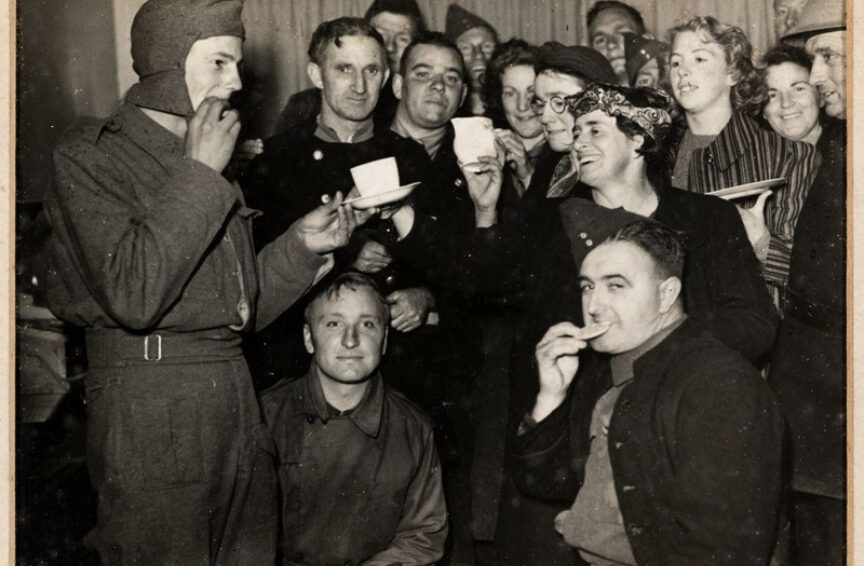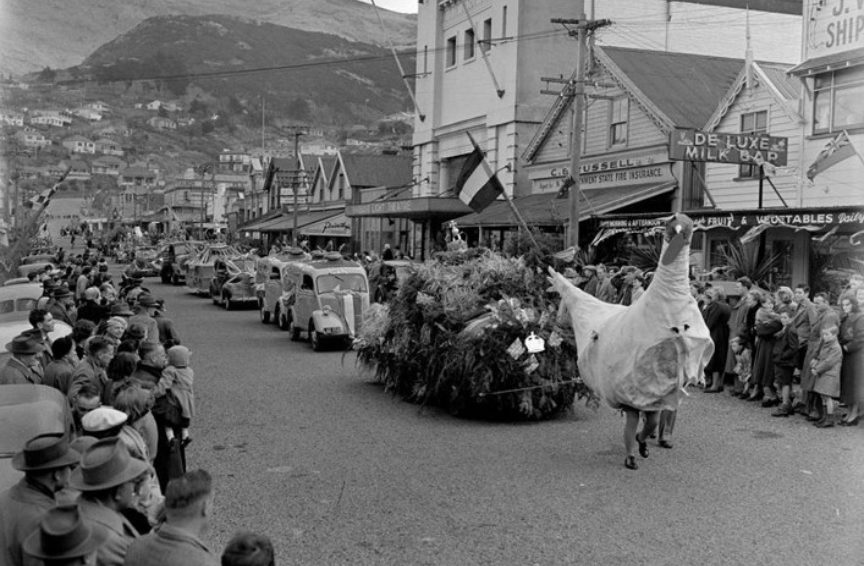PO Box 95
Lyttelton 8841
Te Ūaka recognises Te Hapū o Ngāti Wheke as Mana Whenua and Mana Moana for Te Whakaraupō / Lyttelton Harbour.
The 1951 Lockout – 151 days of hardship
By JC Betts
In the 1970s a Lyttelton girl introduced her new boyfriend to her father. He told her: “You’re not going out with that boy. His father’s a scab”. The memory of the 1951 Lockout was still raw.
The dispute arose between New Zealand’s Waterside Workers’ Union and its Port Employers’ Association over wage negotiations. The wharfies, although prepared to work a 40 hour week, put a ban on overtime. When they turned up for work on 15 February 1951 however, they were locked out. Those who refused to work overtime were sacked.
As time went on, many other unions including the Seamen’s, Miners’, Freezing Workers’, and Transport and Railway Workers’ unions went on strike in support. On 21 February, Prime Minister Sid Holland’s conservative National government declared a State of Emergency and introduced draconian regulations. They imposed a complete ban on any publications about the dispute, and police powers were increased – it became illegal for wharfies to meet together in public, even two or three of them. Worst of all, it was illegal to help the men or their families by supplying them with money, food or necessities.
The Waterside Workers’ Union was deregistered and the Government seized all the funds the various branches possessed but rumour has it that the Lyttelton branch transferred their assets to a different account and were able to keep them. There was a police baton charge in Tāmaki Makarau Auckland and skirmishes in Pōneke Wellington but no open violence in Ōhinehou Lyttelton, however with such a small population base centred on the port, the community was deeply affected.
The harsh Government regulations were often ingeniously circumvented. A newsletter was secretly produced on a Gestetner machine in the New Zealand Seamen’s Union office on Norwich Quay and a man known as Gulliver’s Travels speedily distributed such publications nationwide, thanks to the coastal shipping network at the time. One ex-wharfie was stopped and searched in the street – he was just carrying a roll of sandpaper, which the policeman had mistaken for an illegal publication.
Unable to meet in any of the hotels as usual, the wharfies’ only safe haven was The Loons, the Waterside Workers Social Club. The Loons was gifted to the Lyttelton Working Men’s Club by the Waterside Workers’ Union in 1951. Many well-wishers from around the country were willing to supply the affected families with food and other necessities – in the strictest secrecy of course. The food had to be picked up from depots at various houses around the port. Baden Norris, Lyttelton Museum’s founder, remembered the mortification he felt whenever he saw his mother hiding her shopping bag under her coat, like a criminal, to go and collect their family’s food.
Two young mothers, living next door to each other, had a problem – how to boil their babies’ nappies in their coppers when the firewood, supplied illegally, proved too green to burn without any dry kindling? The women came to an agreement – they would share the wooden fence dividing their properties to get their fires started. Over the 151 days of the lockout, the washing got done and the fence gradually disappeared.
Some housewives went out to work for the first time. The local Lichfield Shirt Factory gave employment to many women and girls whose families badly needed the income. As colder weather set in, shortages, especially of coal, started to hit the population hard. The unions, which had supported the watersiders by going on strike, started going back to work one by one.
On July 15, 1951 the dispute ended.
The Government had set up separate watersiders’ unions in each of New Zealand’s 26 ports, but those who joined were considered to be ‘scabs’ by the original wharfies, many of whom were blacklisted. It was difficult for many of those who were blacklisted to find other work. Some lost their houses and many were in debt for years after.
On prominent display, just inside the entrance to the old Lyttelton Museum on Gladstone Quay, were multiple colourful certificates, reading:
NZ Waterside Workers’ Union
Waterfront Lockout ‘51
Stood Loyal Right Through
One Hundred and Fifty-one Days—February 15 to July 15 1951
The name of each recipient is handwritten, and this was all these poor fellows gained from the whole sorry episode. Just remember, if you’re in port, never call the 1951 dispute a ‘strike’ – it was a lockout, right?

